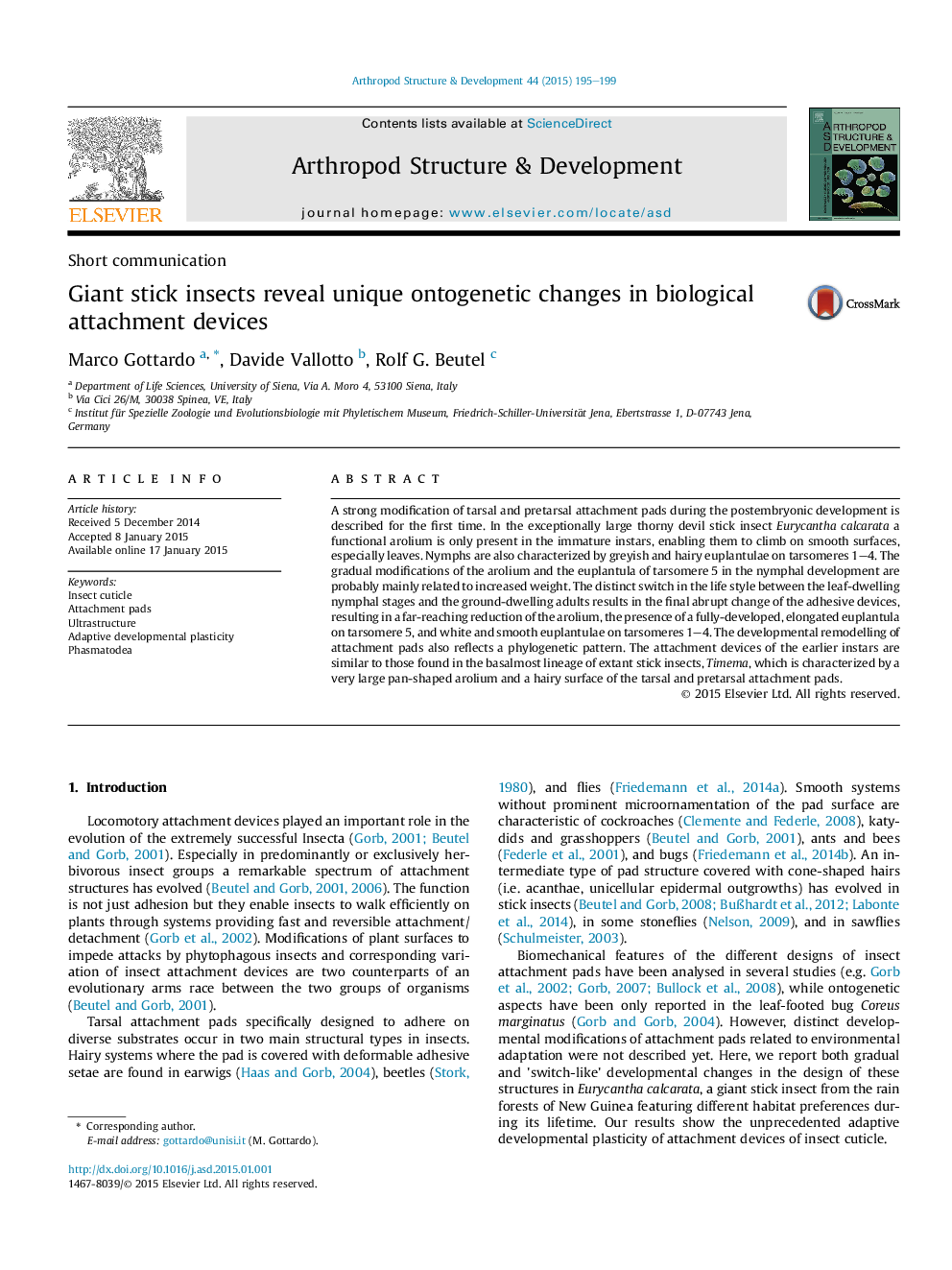| Article ID | Journal | Published Year | Pages | File Type |
|---|---|---|---|---|
| 2778632 | Arthropod Structure & Development | 2015 | 5 Pages |
•An unusual case of developmental remodelling of insect attachment pads is reported.•Modifications of attachment pad structure are concomitant with life-style change.•Results show the adaptive developmental plasticity of insect attachment pads.•The findings underscore a phylogenetic pattern in the development of attachment pads.
A strong modification of tarsal and pretarsal attachment pads during the postembryonic development is described for the first time. In the exceptionally large thorny devil stick insect Eurycantha calcarata a functional arolium is only present in the immature instars, enabling them to climb on smooth surfaces, especially leaves. Nymphs are also characterized by greyish and hairy euplantulae on tarsomeres 1–4. The gradual modifications of the arolium and the euplantula of tarsomere 5 in the nymphal development are probably mainly related to increased weight. The distinct switch in the life style between the leaf-dwelling nymphal stages and the ground-dwelling adults results in the final abrupt change of the adhesive devices, resulting in a far-reaching reduction of the arolium, the presence of a fully-developed, elongated euplantula on tarsomere 5, and white and smooth euplantulae on tarsomeres 1–4. The developmental remodelling of attachment pads also reflects a phylogenetic pattern. The attachment devices of the earlier instars are similar to those found in the basalmost lineage of extant stick insects, Timema, which is characterized by a very large pan-shaped arolium and a hairy surface of the tarsal and pretarsal attachment pads.
Graphical abstractFigure optionsDownload full-size imageDownload as PowerPoint slide
